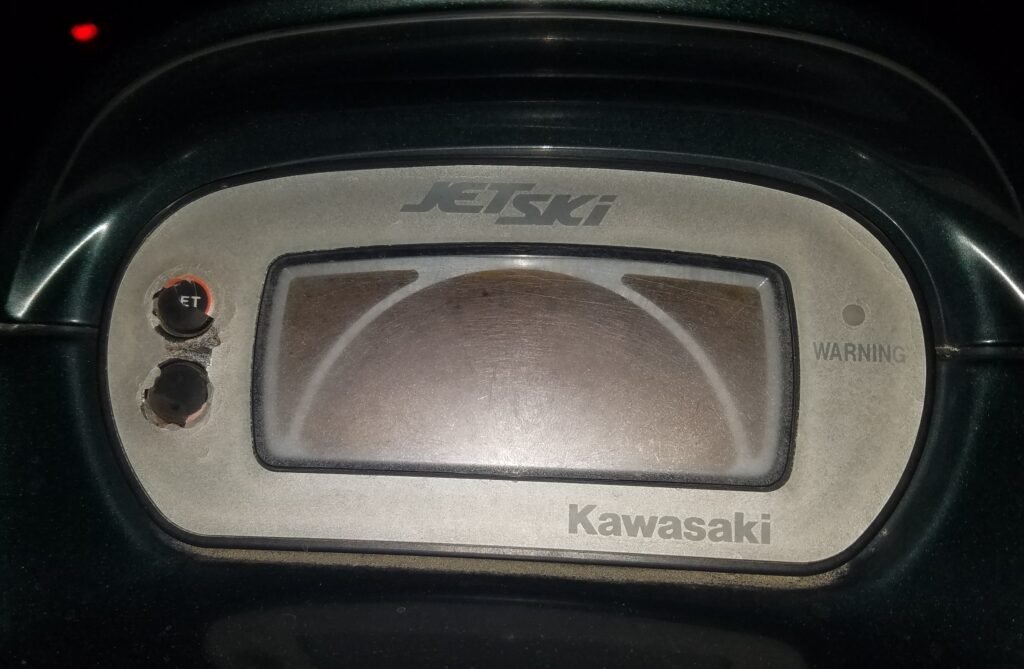This post may contain affiliate links, which means that I may make a small commission off items you purchase at no additional cost to you. Please see my terms of use page for details.
Are there any common complaints about Kawasaki Jet Skis? In this comprehensive article, we aim to provide you with detailed information on the most popular questions people have about jet skis and personal watercrafts, including specific inquiries about industry-leading manufacturers such as Yamaha, Sea-Doo, Kawasaki, Honda, and Polaris. We will delve into everything from technical specifications to customer opinions and explore why certain brands are regarded as more reliable than others.
Additionally, we will discuss the reasons behind Honda, Polaris, and Tigershark discontinuing their production of jet skis, PWCs, and personal watercrafts. So, if you’re curious about the common complaints synonymous with Kawasaki jetskis or any other aspect of this exciting industry, keep reading to find all the answers you seek. One of the frequent problems Kawasaki jetskis have is sun damaged Multi-function gauges, the video below shows a little bit about how to resolve that problem without replacing it. Of course their MFA displays in most cases just happen to be the most expensive to replace, with some costing as much as $1200.00-$1600.00.

Introduction
When it comes to exhilarating aquatic adventures, few experiences compare to the thrill of riding a jet ski. And when it comes to jet skis, Kawasaki is a name that stands out in the industry. With a rich history, cutting-edge technology, and a wide range of models, their Jet Skis have become a popular choice for water sport enthusiasts worldwide.
In this comprehensive article, we will take a closer look at the world of Kawasaki Jet Skis. From their fascinating history to the advanced features and technology they offer, we will explore what makes these personal watercrafts so special. We will delve into their performance and reliability, design and comfort, safety features, maintenance requirements, and customer opinions. In addition, we will compare Kawasaki Jet Skis with their competitors and discuss why certain brands have discontinued production. Finally, we will explore industry trends and the future prospects of jet skis.
Overview of Kawasaki Jet Skis
History of their Jet Skis
Kawasaki Jet Skis have a long and illustrious history that dates back to the early 1970s. Kawasaki was the first company to mass-produce a stand-up personal watercraft, introducing the JS400 in 1972. This groundbreaking watercraft revolutionized the industry and laid the foundation for their dominance in the market. Over the years, they have continued to innovate and refine their jet skis, earning a reputation for quality and performance.
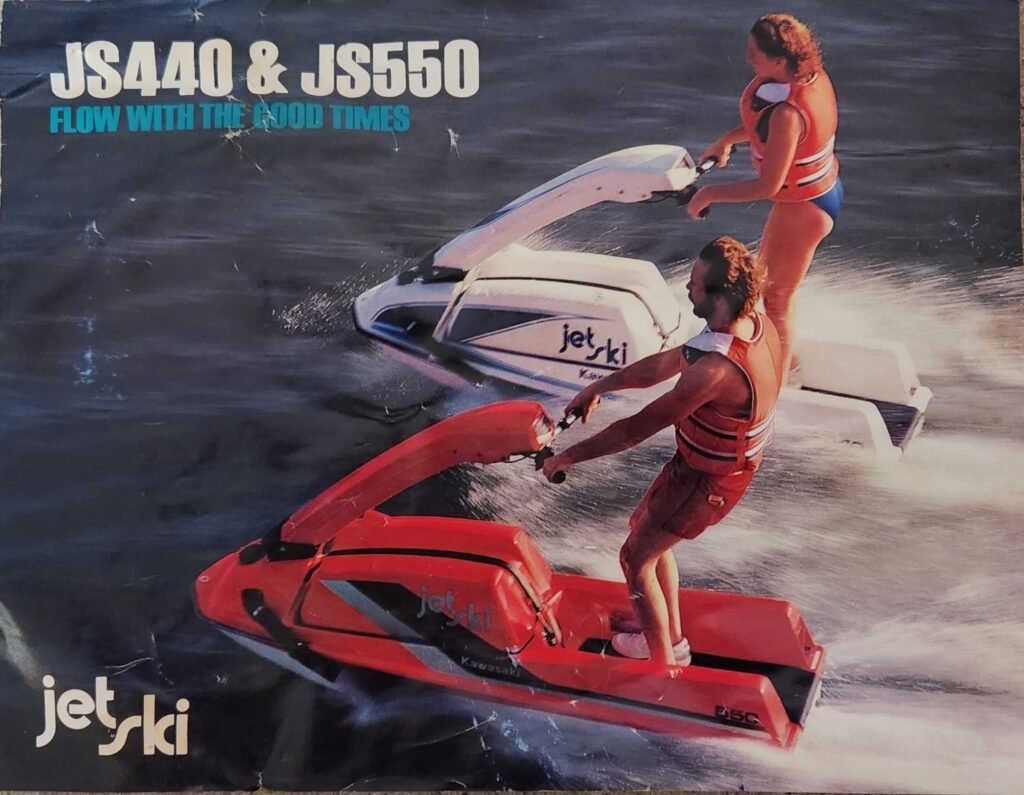
Features and Technology
One of the key reasons behind the popularity of Kawasaki Jet Skis is the advanced features and technology they offer. From powerful engines to state-of-the-art handling systems, each of their models incorporate cutting-edge technology to enhance the rider’s experience. Features such as Electronic Throttle Valve (ETV) and the Kawasaki Smart Reverse and Deceleration System(KSRD). Kawasaki Jet Skis also boast innovative hull designs and efficient cooling systems, further enhancing their overall performance.
Popular Models
Kawasaki offers a wide range of Jet Ski models to cater to different preferences and riding styles. Some of the popular models include the Ultra series, which is known for its top-of-the-line performance and luxurious features. The SX-R, a stand-up model, is highly regarded among freestyle riders who appreciate its agility and maneuverability. The STX series offers a balance of power and affordability, making it a popular choice for recreational riders. With a diverse lineup, they provide options for everyone, whether they are adrenaline junkies or casual riders.
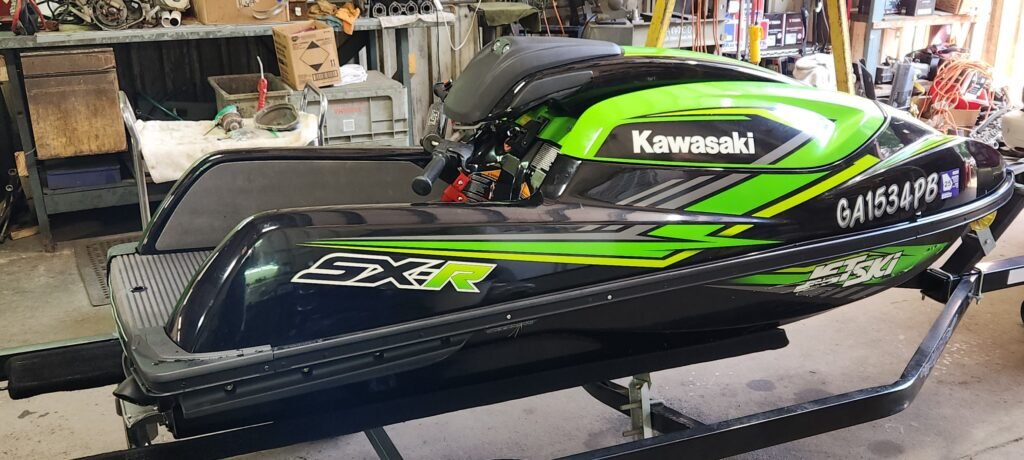
Performance and Reliability
Engine Performance
One of the standout features of Kawasaki Jet Skis is their impressive engine performance. They utilize powerful engines with varying horsepower options to cater to different needs. This ensures that riders can enjoy thrilling acceleration and high-speed capabilities. The engines are engineered to provide excellent low-end torque, allowing for quick acceleration and responsive handling. Whether you’re looking to embark on a fast-paced ride or engage in watersports activities, their Jet Skis deliver the power you need.
Handling and Stability
In addition to powerful engines, Kawasaki Jet Skis are designed to offer exceptional handling and stability on the water. The hull designs, coupled with advanced technologies like Kawasaki Smart Steering (KSS) and Kawasaki Smart Learning Operation (KSLO), enable precise maneuverability and effortless control. These features enhance the overall riding experience, providing riders with confidence and peace of mind. Whether you’re navigating through tight turns or cruising at high speeds, Kawasaki Jet Skis deliver a smooth and stable ride.
Durability and Longevity
When investing in a personal watercraft, durability and longevity are important factors to consider. Kawasaki Jet Skis are known for their robust construction and high-quality materials, ensuring they can withstand the rigors of water sports activities. The hulls are designed to be impact-resistant, reducing the risk of damage. Additionally, their Jet Skis undergo rigorous testing and quality control measures, further ensuring their reliability and longevity. With proper maintenance, their Jet Skis can provide countless hours of adrenaline-pumping fun for years to come.
Design and Comfort
Ergonomics and Seating
Kawasaki places great emphasis on ergonomics and rider comfort when designing their Jet Skis. The seats are designed to provide ample support and comfort, even during extended rides. The handlebars and footwells are ergonomically positioned to promote a natural riding position and reduce rider fatigue. These thoughtful design elements contribute to an enjoyable riding experience, allowing riders to fully focus on the thrill of the ride.
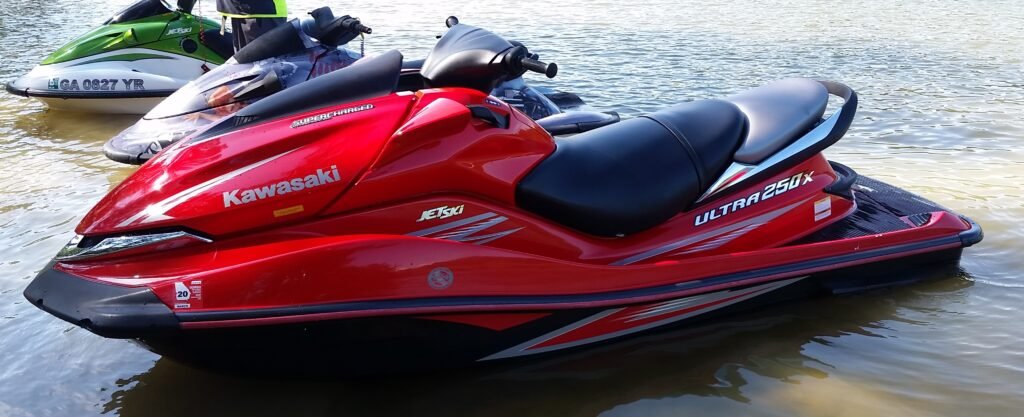
Storage and Cargo
Practicality is another aspect that Kawasaki considers in their Jet Ski designs. Many of their models feature spacious storage compartments that allow riders to stow essential belongings, such as a phone, keys, or a small cooler. This makes longer rides more convenient, as riders can have their essentials within reach. Some models even have additional cargo space, enabling riders to pack extra gear for day trips or watersports activities.
Accessibility and Controls
Kawasaki Jet Skis are designed with user-friendly controls that are easy to navigate, even for beginners. The layout of buttons and switches is intuitive, allowing riders to easily access various features and functionalities. They also incorporate digital displays into their models, providing riders with essential information such as speed, fuel levels, and engine diagnostics. These user-friendly design elements contribute to a hassle-free and enjoyable riding experience.
Safety Features
Braking System
Safety is a top priority when it comes to jet ski design, and Kawasaki is committed to providing an array of safety features. One notable safety feature is the Kawasaki Smart Reverse and Deceleration System(KSRD). The (KSRD) is activated by pushing a thumb switch on the right handlebar to electronically deploy the reverse bucket for deceleration and ensure precise control and improved safety. This feature was just introduced in 2022 in response to the Seadoo IBR system and The Yamaha RiDE system. It provides riders with increased control and stability when coming to a stop, especially in emergency situations. The (KSRD) is designed to enhance rider safety and minimize the risk of collisions.
Emergency Shut-Off
An essential safety feature found in Kawasaki Jet Skis is the emergency shut-off lanyard. This lanyard is attached to the rider and connected to the engine’s shut-off switch. If the rider falls off or becomes separated from the Jet Ski, the lanyard pulls the shut-off switch, immediately cutting off power to the engine. This safety mechanism ensures that the Jet Ski comes to a stop should the rider be thrown off or encounter any other emergency situation.
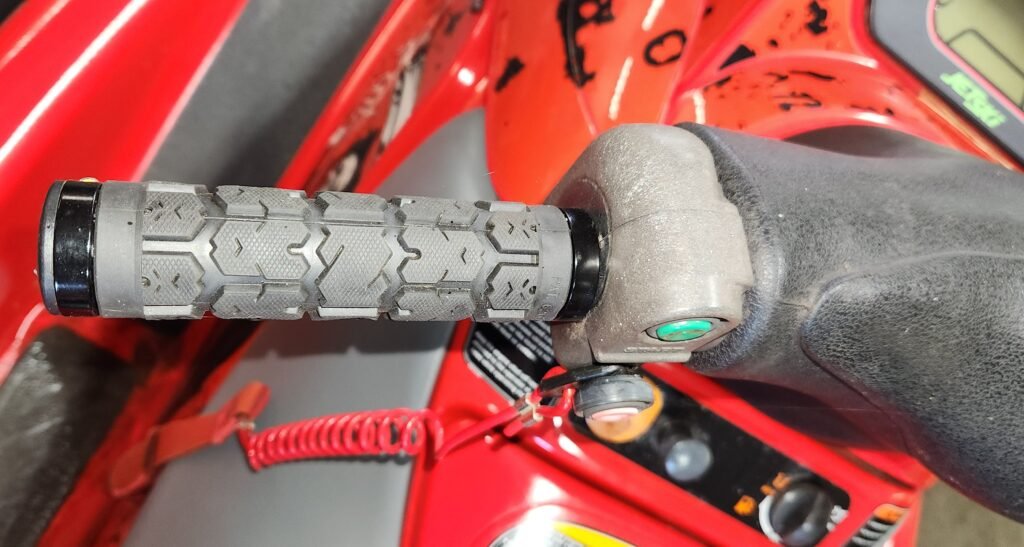
Hull Design and Stability
Kawasaki Jet Skis feature hull designs that prioritize stability and control. The hulls are engineered to provide a stable and balanced ride, even in rough or choppy water conditions. This helps to reduce the risk of accidents and enhance rider safety. The advanced hull designs also contribute to improved handling and responsiveness, allowing riders to confidently navigate various water conditions with ease.
Maintenance and Repairs
Routine Maintenance
Like any vehicle, proper maintenance is crucial to ensure the longevity and optimal performance of Kawasaki Jet Skis. Routine maintenance tasks include regular inspections, oil changes, filter replacements, and spark plug checks. They provide detailed maintenance schedules and guidelines in the owner’s manual, making it easy for owners to keep their Jet Skis in top condition. Following these recommended maintenance procedures will help prevent potential issues and keep the Jet Ski running smoothly for years.
Common Repairs and Issues
While Kawasaki Jet Skis are known for their reliability, occasional repairs may be necessary. Common issues that owners may encounter include battery problems, fuel system issues, electrical malfunctions, and wear and tear on moving parts. It’s important to address these issues promptly to prevent further damage and ensure proper functionality. Their extensive dealer network and authorized service centers make it easy for owners to find qualified technicians who can diagnose and repair any problems.
Cost of Ownership
When considering the purchase of a Kawasaki Jet Ski, it’s important to factor in the cost of ownership. In addition to the initial price of the Jet Ski, owners should consider ongoing expenses such as maintenance, fuel costs, insurance, and storage fees. While the cost of ownership can vary depending on individual usage patterns and maintenance requirements, their Jet Skis are generally known for their reasonable maintenance costs and fuel efficiency. Researching and comparing prices for services and insurance can help owners manage their expenses effectively.
Customer Reviews and Opinions
Satisfaction Levels
Customer satisfaction is a vital factor when evaluating the quality and performance of any product, including Kawasaki Jet Skis. Overall, they have garnered positive reviews and high satisfaction levels among riders. Many owners praise the powerful performance, reliable construction, and cutting-edge features of Kawasaki Jet Skis. They appreciate the attention to detail in design and the seamless integration of advanced technology. The exhilarating riding experience that their Jet Skis offer receives widespread praise, making them a favorite choice among water sport enthusiasts.
Comparison with Other Brands
When it comes to comparing Kawasaki Jet Skis with other brands, individual opinions vary. Some riders prefer Kawasaki for its combination of power, reliability, and advanced technology. Others may lean towards different brands based on personal preferences or specific requirements. Yamaha, Sea-Doo (BRP), Honda, and Polaris are some of the main competitors in the personal watercraft market. Customer opinions comparing these brands often center around factors such as engine performance, design, handling, safety features, and manufacturer reputation. Ultimately, the choice between brands depends on the specific needs and preferences of the rider.
Reliability and Performance
Reliability and performance are crucial considerations when investing in a personal watercraft. Many owners attribute high levels of reliability to their Kawasaki Jet Skis, praising their ability to withstand demanding usage and harsh conditions. The brand’s longstanding reputation for quality and durability reinforces the confidence riders have in their reliability. In terms of performance, Kawasaki Jet Skis are known for their impressive speed, acceleration, and handling capabilities. The combination of reliable performance and durability makes Kawasaki a popular choice among riders seeking a thrilling and dependable experience on the water.
Kawasaki Jet Skis vs. Competitors
Kawasaki vs. Yamaha
Kawasaki and Yamaha are two leading manufacturers in the personal watercraft industry, each with their own loyal fan base. When comparing Kawasaki Jet Skis to Yamaha’s WaveRunners, both brands excel in different areas. Kawasaki is often favored for its powerful engines, aggressive styling, and cutting-edge technology. Yamaha, on the other hand, is known for its smooth and comfortable ride, innovative features, and fuel efficiency. Determining which brand is better ultimately comes down to individual preferences, as both manufacturers offer a range of models to cater to different riding styles and preferences.
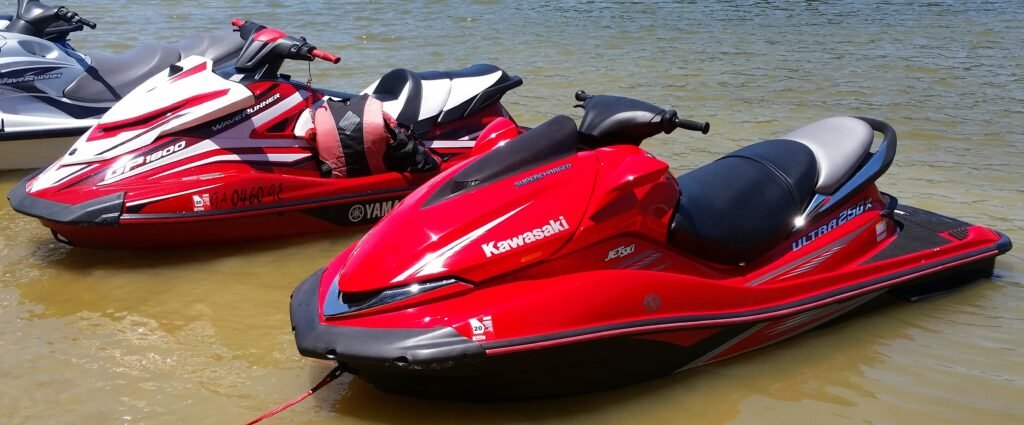
Kawasaki vs. Seadoo
Seadoo, a brand under the BRP (Bombardier Recreational Products) umbrella, is another major competitor in the personal watercraft market. Kawasaki and Seadoo offer distinct features and characteristics that appeal to different riders. Kawasaki is renowned for its powerful engines, high-speed capabilities, and aggressive styling. Seadoo, on the other hand, is often praised for its advanced technology, innovative features, and industry-leading stability. Both brands have their own unique selling points, and the choice between them ultimately depends on the rider’s priorities and preferences.
Kawasaki vs. Honda
While Honda is primarily known for its automobiles and motorcycles, they have also dabbled in the personal watercraft industry. However, Honda made the decision to discontinue their production of jet skis, focusing their efforts on other product lines. As a result, a direct comparison between Kawasaki Jet Skis and Honda’s discontinued models may not be possible. That being said, Honda’s decision to exit the personal watercraft market has paved the way for Kawasaki to further establish itself as a key player in the industry.
Kawasaki vs. Polaris
Polaris, a well-known manufacturer in the powersports industry, produced personal watercraft under their Polaris Watercraft and Tigershark brands. However, Polaris decided to exit the personal watercraft market, discontinuing production. This decision ended the direct competition between Kawasaki and Polaris in the jetski segment. With Polaris’ departure from the market, Kawasaki’s dominance and reputation have been further solidified.
Brands That Ended Production
Reasons Behind Honda’s Decision
Honda’s decision to discontinue their production of jet skis was driven by various factors. While Honda had a presence in the personal watercraft market, their focus shifted toward other product lines where they saw higher growth potential. Rising competition, increasing regulatory requirements, and the cost-intensive nature of the personal watercraft business contributed to Honda’s decision. By reallocating their resources and focusing on other product lines, Honda aimed to maximize their overall profitability and strategic growth.
Polaris Exiting the Market
Similar to Honda, Polaris made the decision to exit the personal watercraft market. This decision was part of a larger strategic shift within the company. Polaris decided to prioritize their core product lines and invest in new growth opportunities. While Polaris had a dedicated customer base for their personal watercraft, the decision to exit allowed them to allocate resources to areas where they saw higher potential returns and market demand. Polaris continues to focus on their successful ATV, side-by-side, and snowmobile product lines.
Tigershark’s Discontinuation
Tigershark, a former brand under the Polaris umbrella, played a significant role in the history of personal watercraft. However, due to market dynamics and changing consumer preferences, Polaris discontinued the Tigershark brand. Factors such as intense competition, declining sales, and changing regulations influenced this decision. While Tigershark once thrived in the industry, its discontinuation signaled a changing landscape and the emergence of other dominant brands like Kawasaki.
Industry Trends and Future Prospects
Growing Demand for Jet Skis
The personal watercraft industry, including the jet ski market, has witnessed steady growth in recent years. Jet skis have become increasingly popular among water sport enthusiasts due to the thrilling experience they offer. Factors such as rising disposable incomes, advancements in technology, and the expanding leisure industry contribute to this growing demand. As more people seek outdoor recreational experiences, the demand for jet skis is expected to continue rising in the future.
Environmental Concerns
While jet skis provide exhilarating experiences, concerns about their environmental impact have been raised. The noise and emissions produced by jet skis have drawn criticism in certain areas, leading to stricter regulations and noise control measures. In response, manufacturers like Kawasaki are investing in quieter and more eco-friendly technologies to minimize the environmental footprint of their jet skis. Additionally, greater emphasis is being placed on responsible riding practices and environmental awareness within the jet ski community.
Advancements in Technology
Advancements in technology continue to shape the personal watercraft industry, driving innovation and improving the overall riding experience. Manufacturers like Kawasaki are constantly integrating new technologies into their jet skis. These advancements range from improved engine performance and fuel efficiency to enhanced safety features and advanced control systems. As technology continues to evolve, jet skis are becoming more sophisticated, reliable, and user-friendly, setting the stage for exciting future prospects in the industry.
In conclusion, Kawasaki Jet Skis have established themselves as a prominent player in the personal watercraft industry. With a rich history, advanced features and technology, and a wide range of models, Kawasaki offers thrilling rides, exceptional performance, and reliable craftsmanship. From their powerful engines and responsive handling to their comfortable design and safety features, Kawasaki Jet Skis provide an unmatched experience for water sport enthusiasts.
While other brands have exited the market, Kawasaki’s commitment to innovation, customer satisfaction, and industry trends ensures its continued success in the future. Whether you’re a seasoned rider or a beginner looking to dive into the world of jet skis, Kawasaki is a brand that will deliver the excitement and reliability you seek.
Related Articles:
Is A Kawasaki Jet Ski More Durable or Reliable Than A Honda Jet Ski?
The Incredible 1999 to 2005 Kawasaki Ultra 150 Jetski: A High-Performance 2-Seater PWC

